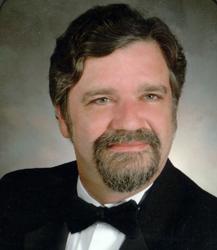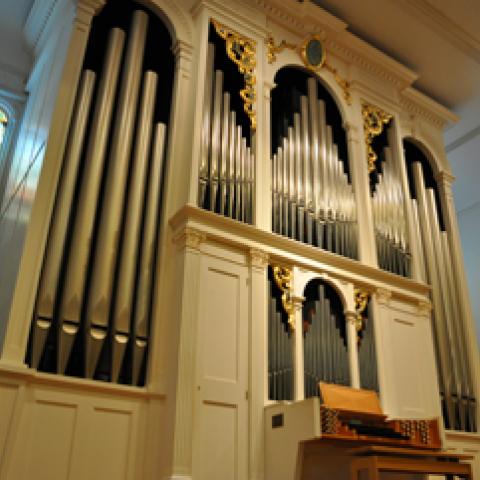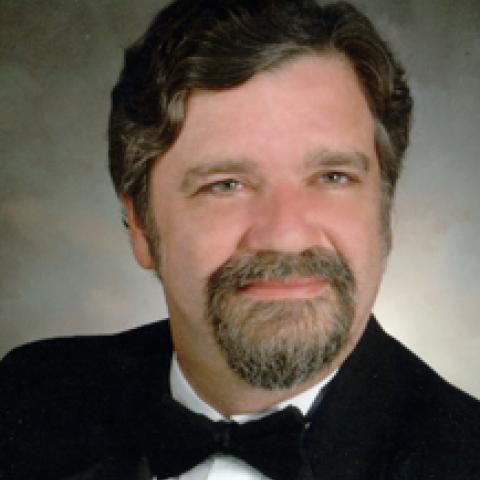Diana L. Akers
The 29th International Organ and Church Music Institute was presented June 15–17 by the University of Michigan School of Music, Theatre & Dance and directed by Marilyn Mason, University Organist and Chair of the Organ Department. The institute was devoted to the study of music by César Franck and Olivier Messiaen, Gregorian, Anglican and responsorial chant, Martin Luther’s musical thinking, hymn improvisation, and pipe organs around the world. Sessions were presented by Gordon Atkinson, Ralph Kneeream, Andrew Mead, Helmut Schick, Erven Thoma, and Steven Hoffman. A concert of works for violin and organ opened the institute, and two organ recitals, one of works by César Franck and one of works by Olivier Messiaen, were presented the following two evenings.
Opening concert
The opening concert was part of the Ann Arbor Summer Festival Classical Music Series and was held at Blanche Anderson Moore Hall. Pierre Darchambeau, violin, and Marilyn Mason, organ, performed works for violin and organ by Handel, Bach, Ysaÿe, Mozart, and Rheinberger. The “Marilyn Mason Organ,” Fisk opus 87, is modeled after the medium-sized organs of Gottfried Silbermann and most closely resembles the Silbermann organ in the Georgenkirche in Rötha, Germany (www.milandigitalaudio.com/silbermannstgeorge.htm).
Two early works of J. S. Bach were heard: Partita, “O Gott, du Frommer Gott,” BWV 767, and Pedal-Exercitium, BWV 598, along with Mozart’s Andante für eine Walze in eine Kleine Orgel, KV 616. The Fisk organ, with its one-fifth-comma modified meantone temperament, was the perfect instrument for the performance of this charming piece. Belgian violinist Pierre Darchambeau displayed brilliant technique and musicianship in the performance of the demanding Sonata No. 3 in D Minor, op. 27, no. 3, for violin alone, by Eugene Ysaÿe (1858–1931). Josef Rheinberger (1839–1901) composed several pieces for violin and organ, including the Suite in C Major, op. 166, which concluded the program. Working together as one, the two soloists achieved a finely tuned balance between the instruments, which inspired the audience to call for an encore, the Arioso by J. S. Bach.
Chant
Gordon Atkinson, visiting scholar from Victoria, Australia, conducted two sessions on chant. Born in Melbourne, he spent much of his life in England and North America. He attended the Royal College of Music in London, and was organist at St. John the Baptist in Kensington, where two of his predecessors were Healey Willan and William Harris. Past president of the Royal Canadian College of Organists, Atkinson has composed a number of Mass settings, choral and organ works, including Celebration, commissioned by Marilyn Mason. It appears on a CD played by Marijim Thoene at St. Joseph Abbey, St. Benedict, Louisiana. Dr. Atkinson’s experience as composer, music director, university instructor, and organist provided the group with meaningful, musical and proper methods of singing Gregorian, Anglican and responsorial chant. He provided diverse musical samples, including his own compositions, and opportunities were given to lead as soloist and cantor and to sing with and direct the group. The session concluded with a rendition of the hymn of praise, Atkinson, O God of Light.
Dr. Atkinson later offered a rare and entertaining presentation of “Australia’s Organ Heritage.” Tracing the history of the pipe organ in Australia, he discussed the organ builders who were German emigrants—Daniel Lemke, Carl Krüger, and Johann Wolff. Significant imports came from E. F. Walcker and others, followed by von Beckerath, Jürgen Ahrend, and others. Slides of various organs were displayed, along with recordings of a range of music, from the Gigout Toccata to Waltzing Matilda.
Organ history
Two lectures on pipe organs, “Ancient Organs through Freiburg” and “Poitiers through Contemporary Organ Building,” were presented by organ historians Helmut Schick and Erven Thoma. The historical development of the instrument was documented through ancient diagrams and writings. Mechanical developments were explained and related to performance and compositional development. Audio soundtracks were matched with photos of actual instruments so that one could hear the difference in voicing and organ specifications. Photos showcased the beauty and artwork of the organ cases.
Franck
“Organ Music of Franck (1822–1890), Photographs, Documents, Texts, Scores, Live and Recorded Performances,” was presented by Ralph Kneeream. Preceding the lecture, Dr. Kneeream shared personal memories and photographs of composers such as the Duruflés, Dupré, and Tournemire, and the 19th-century organ builder Aristide Cavaillé-Coll.
Beginning with the history of Sainte Clotilde, the life and works of César Franck were presented through the interpretations of Charles Tournemire and Maurice Duruflé. Dr. Kneeream stated that Cavaillé-Coll changed the French classical organ by reducing the number of flutes and mutations and by adding stops such as harmonic flutes. He was the first to place the Grand Orgue as the lowest manual instead of the Positif, and he included couplers so that the entire organ could be played from the Grand Orgue.
An expert on the life of Charles Tournemire, Kneeream translated and edited Tournemire’s book César Franck (1930). For performance and registration information, he referred the institute attendees to this volume, citing such quotations as “modulate, modulate, modulate” and the recommendation to “play the room” by allowing endings to naturally decay instead of by counting.
Dr. Kneeream noted that Arbiter Records has recently (May 2008) reissued the original Tournemire recordings of the works of Franck on the Ste. Clotilde organ (1930–31). Kneeream wrote the liner notes and recommended that attendees listen to this CD for performance interpretation and to hear the authentic sounds of the Franck organ, before the Tournemire alteration of the organ in 1933 (www.arbiterrecords.com).
According to Kneeream, within the Ste. Clotilde tradition one can hear the lineage of the great organ composers. For example, in Franck’s Choral en la mineur one can hear the influence of Bach’s Prelude in A Minor, BWV 543. The key link among French composers such as Franck, Tournemire and Olivier Messiaen is mysticism.
Franck masterclass and recital
Masterclass performances were given by U of M students Christopher Reynolds, Jason Branham, and Aaron Tan. Institute attendees were later treated to an all-Franck recital by graduate students of Marilyn Mason on the Frieze Memorial Organ in Hill Auditorium (www.umich.edu/~urel/hill/organ.html): Pièce Héroïque, Jason Branham; Cantabile, Christopher Reynolds; Choral in E Major, Paul Haebig; Choral in B Minor, Andrew Meagher; and Choral in A Minor, Aaron Tan.
Messiaen
Professor Andrew Mead, former chair of the music theory department, presented two sessions on Messiaen: “Visions of Glory: An Introduction to Olivier Messiaen’s Works for Organ” and “Olivier Messiaen’s Works for Organ.”
Somewhat demystifying the music of Messiaen, Mead explained that precedents for several of Messiaen’s compositional ideas and colors can be found in the works of composers such as Bach and Berlioz. Trio texture dominates many of Messiaen’s works. For contrast, as in Baroque literature, three very different registrations are used for each of the three voices and, similar to a cantus firmus in chorale preludes, 4-foot registrations are sometimes used for the melody. Like the trios found in the Bach F-Major Toccata, BWV 540, many times all possible combinations of voices are presented. This concept of using all possible combinations was also used in rhythmic and pitch variations. Another Messiaen technique was to contrast a low fundamental with high registration. Preceding Messiaen in French music, Berlioz contrasted six trombones with three flutes in his Requiem.
Dr. Mead explained many of the techniques that contribute to the sense of infinity or timelessness in the music of Messiaen. His music is not about development, but rather about return and reflection. One should look for recurrent motivic spans, both identical and similar, and techniques such as stretching and contraction and non-retrogradable rhythms. Mead also explained many of the pitch techniques and sources that Messiaen used in his compositions. Modes of limited transposition and chords of the dominant are all explained in Messiaen’s book, The Technique of My Musical Language. Chords of the resonance, based on the overtone series, parallel motion in the modes and in transposed scales, and combinations of scales all contribute to the sense of timelessness in this music, which moves slowly with contrasting, ever-changing colors and rhythm.
Martin Luther
Pulling together all aspects of the institute, Steven Hoffman’s lecture and demonstration, “Next to Theology . . . Music: Luther’s Musical Thinking and Hymn Improvisation,” combined chant, textual meaning, improvisation from organ literature, and inspirational organ playing. Theology first and music second was the focus of Luther’s musical thinking. Choosing several hymns from the Lutheran hymnal, Dr. Hoffman examined the texts first, then the musical sources, and then creatively improvised introductions that portrayed the meaning of the texts. One of his most dramatic improvisations was from Messiaen’s L’Apparition de l’Église Éternelle introducing the hymn, “Let All Mortal Flesh Keep Silence.” Citing Luther’s quotation, “Next to theology, God’s greatest gift is music,” Hoffman demonstrated how the gifts of the human voice, text, and musical skill and knowledge all can be used to celebrate the glory of God. The lecture then concluded with the uplifting, rhythmic version of “A Mighty Fortress Is Our God” (Ein Feste Burg), text by Martin Luther.
Messiaen recital
Topping the final day was an all-Messiaen recital on the Frieze Memorial Organ in Hill Auditorium. Graduate students Christopher Reynolds, Jason Branham, Andrew Meagher, Christopher Urbiel, Richard Newman, and Paul Haebig performed Le Banquet Céleste, Apparition de l’Église Éternelle, “Alléluias sereins” (L’Ascension), “Adoro te” (Livre du Saint Sacrement), “Les Mains de l’abîme” (Livre d’Orgue), and “Joie et clarté des corps glorieux” (Les Corps Glorieux). Dr. Mason performed Verset pour la fête de la Dédicace, a later work of chant and birdsong, and Dr. Mead performed three movements from Messe de la Pentecôte.
The recital was a brilliant ending to three days of a well-conceived interdisciplinary study of the pipe organ and church music. If there were one recurrent theme throughout the various sessions of the institute, it would be a sense of élan, or a call from the soul, and mysticism. In this music, reaching toward the beyond is essential for the composers, the organbuilders, the performers, and the listeners. �■





